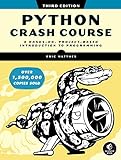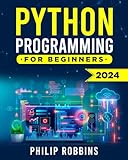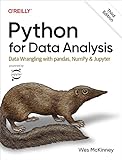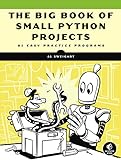To look up data between two columns in pandas, you can use the loc function with conditional statements. For example, you can use the following syntax to filter rows based on conditions from two columns:
result = df.loc[(df['Column1'] > value1) & (df['Column2'] < value2)]
This code snippet will generate a new dataframe result that contains only the rows where the value in Column1 is greater than value1 and the value in Column2 is less than value2. You can adjust the conditions based on your specific requirements.
Additionally, you can also use the query method to filter data between two columns in pandas. Here is an example of how you can accomplish this:
result = df.query('Column1 > @value1 and Column2 < @value2')
This code snippet achieves the same result as the previous example but uses a different method to filter the data.
By using these methods, you can efficiently filter and extract data between two columns in pandas based on specified conditions.
How to handle NaN values while looking up data between two columns in pandas?
When handling NaN values while looking up data between two columns in pandas, you can use the combine_first() or fillna() method to fill the missing values with a specified default value.
Here is an example using the combine_first() method:
1 2 3 4 5 6 7 8 9 10 |
import pandas as pd # Create a sample DataFrame with NaN values data = {'A': [1, 2, 3, 4, None], 'B': [10, 20, 30, None, 50]} df = pd.DataFrame(data) # Look up values from column 'B' and fill NaN values with values from column 'A' df['new_column'] = df['B'].combine_first(df['A']) print(df) |
Output:
1 2 3 4 5 6 |
A B new_column 0 1.0 10.0 10.0 1 2.0 20.0 20.0 2 3.0 30.0 30.0 3 4.0 NaN 4.0 4 NaN 50.0 50.0 |
Alternatively, you can use the fillna() method to fill NaN values with a default value:
1 2 3 |
df['new_column'] = df['B'].fillna(df['A']) print(df) |
Output:
1 2 3 4 5 6 |
A B new_column 0 1.0 10.0 10.0 1 2.0 20.0 20.0 2 3.0 30.0 30.0 3 4.0 NaN 4.0 4 NaN 50.0 50.0 |
You can choose the method that best suits your needs based on the desired behavior for handling NaN values.
What is the best way to handle outliers when looking up data between columns in pandas?
One way to handle outliers when looking up data between columns in pandas is to first detect the outliers using statistical methods such as Z-score or IQR (Interquartile Range). Once the outliers are identified, you can choose to either remove them from the dataset or replace them with a more meaningful value (e.g. median or mean).
Here is an example of how you can handle outliers using Z-score in pandas:
1 2 3 4 5 6 7 8 9 10 11 12 13 14 15 16 17 18 19 |
import pandas as pd # Load your dataset df = pd.read_csv('your_dataset.csv') # Calculate the Z-score for each data point in the columns of interest z_scores = (df['column1'] - df['column1'].mean()) / df['column1'].std() # Define a threshold for outliers (e.g. Z-score > 3) threshold = 3 # Filter out outliers by selecting only the data points with Z-score within the threshold filtered_df = df[(z_scores.abs() < threshold)] # Alternatively, you can replace outliers with a more meaningful value # For example, replacing outliers with the median value of the column df['column1'] = df['column1'].mask(z_scores.abs() > threshold, df['column1'].median()) # Now you can proceed with your data analysis or lookup operation without the influence of outliers |
Remember that the choice of how to handle outliers may depend on the specific characteristics of your dataset and the research question you are trying to answer. It is always a good practice to carefully consider the implications of handling outliers in a particular way before proceeding.
What is the significance of exploring data between columns in pandas for data analysis?
Exploring data between columns in pandas for data analysis is significant for several reasons:
- Identifying relationships: Exploring data between columns helps to identify relationships between different variables in a dataset. By comparing and contrasting different columns, analysts can uncover patterns, correlations, and dependencies that may not be immediately obvious.
- Data cleaning: Exploring data between columns can help in data cleaning and preprocessing. Analysts can identify inconsistencies, missing values, outliers, and other issues that may need to be addressed before further analysis can be conducted.
- Feature engineering: Exploring data between columns can help in creating new features or variables that may be more relevant for the analysis. By combining or transforming existing columns, analysts can create new features that provide more insights into the data.
- Dimensionality reduction: Exploring data between columns can help in reducing the dimensionality of the dataset. By identifying redundant or irrelevant columns, analysts can remove them to simplify the analysis and improve model performance.
- Visualization: Exploring data between columns can help in visualizing the data and gaining a better understanding of the underlying patterns and trends. By plotting different columns against each other, analysts can create visualizations that highlight relationships and outliers in the data.
Overall, exploring data between columns in pandas is an essential step in the data analysis process, as it helps in understanding the data, identifying patterns, and preparing the data for further analysis and modeling.









